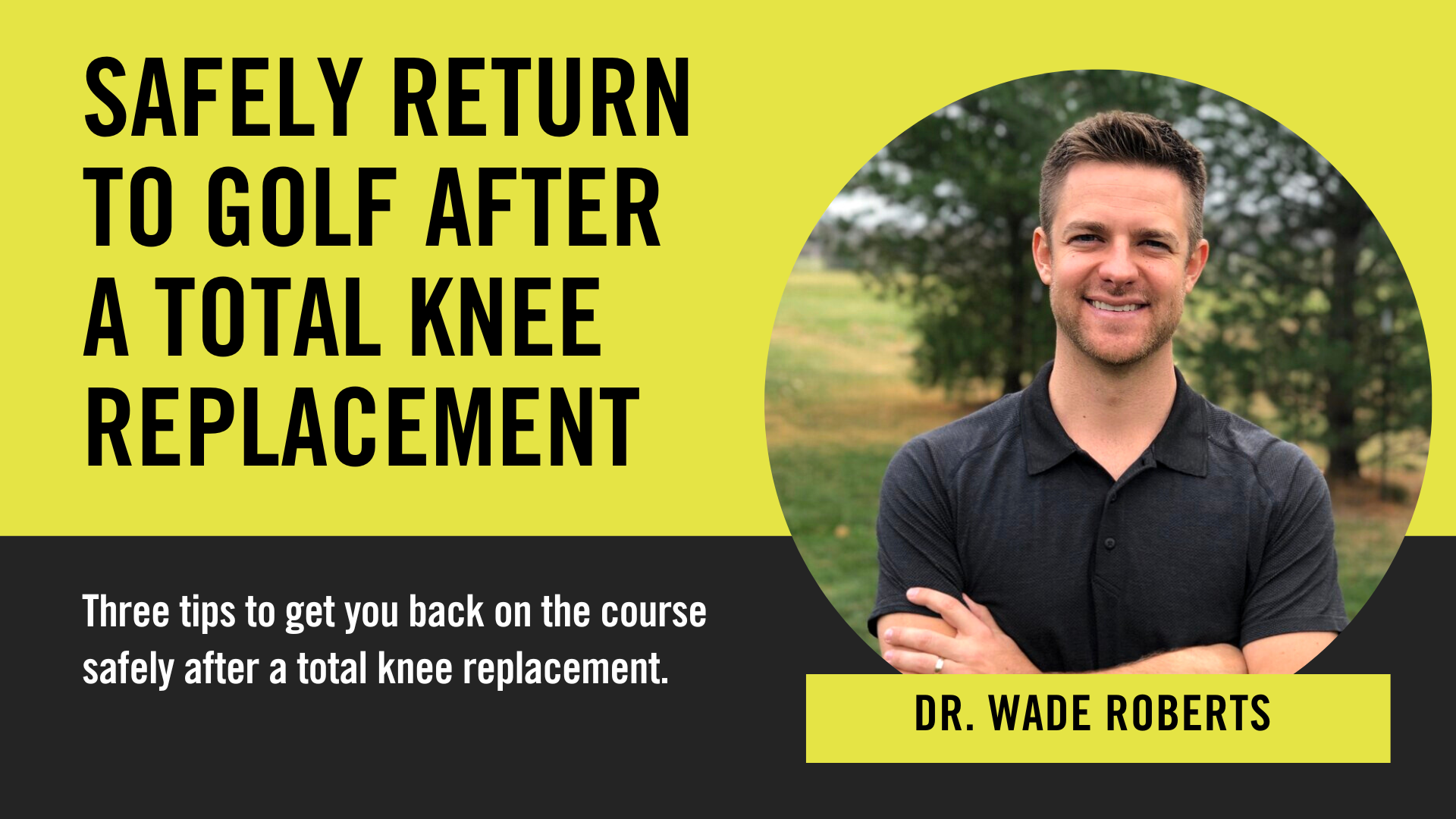Have you had a TKR in the last year or are considering getting one and want to know what you can be doing to either delay it or come back from one the fastest way possible?
The Total Knee Replacement is one of the, if not the number one, performed orthopedic surgery in the U.S. with over 800,000 performed each year.
Many golfers prefer to walk and find themselves having to ride a cart due to knee discomfort. Even worse, some golfers find themselves modifying their golf swing by not loading onto an affected knee or favoring it after surgery due to a fear of putting load or stress on to it.
With golf, anything that creates more compression/rotation into the knee joint will stress the knee more than it is designed to handle. So, here are three things that I recommend to my golfers that are trying to either delay or come back from this surgery to reduce the compression/rotation into that knee.
1 – Hip mobility
This is by far the most important mobility that a golfer with a total knee replacement should be able to have. As you make your turn, if you do not have a full range of motion in your hip, you will place more rotary pressure into the joint above (low back) and below (knee). While you’re working on your ‘knee’ rehab, be sure to have a ton of emphasis placed on the hip region.
Are your hips moving? Check yours at home here >>
2 – Ankle mobility
The ankle is the second most important mobility that a golfer with a total knee replacement should be able to have. In the same conversation as the hip, with a mobility restriction in the ankle, the joint above (the knee) and the joint below (forefoot) are now going to have more stress placed on them. Similar to the previous point, as you’re working on your ‘knee’ exercises, be sure to have a few exercises targeting the mobility in your ankle.
3 – Avoid the ‘jockey’ setup position
The final point is in regards to set up. When a golfer addresses the ball, we ideally want to see them get ‘down to the ball’ using a hip hinge move versus a lot of knee bend/flexion at address. The reason is that increased knee bending/flexion increases the amount of compression through the knee joint. If we’re trying to reduce this compression and take stress off the knee, the jockey position (if you can imagine someone riding a horse and bouncing up and down through the knee joint) should be avoided.
This begs the question do you have a good hip hinge at address? You can try placing your driver along your spine and bending forward from your hips and not through your knees as a quick check.
As this season approaches, a lot of you had surgery this fall/winter or are wondering if you’ll be able to get through this season without needing one. My hope is that you can be more efficient in the gym and will look beyond your ‘knee’ problem and rather address the rest of your body. Even shoe wear can impact how your knee responds on the course!
Off-season is coming to a close…if you have any questions on this, RobertsPT helps educate, equip, and train golfers to play for years to come with less pain and more distance.
If you don’t have a trusted Doctor of Physical Therapy specializing in golf supervising your plan, we’d be happy to jump on a call to discuss your off-season goals. Call 214-998-9904 or email wade@robertspt.co.
Dr. Wade Roberts is a contributing writer for Central Links Golf. Dr. Roberts is the owner of Roberts PT, a golf PT and Performance Center in Kansas City. He graduated from Liberty University with a Bachelor of Science Degree in Kinesiology. He then earned his Doctor of Physical Therapy from Lynchburg College. Dr. Roberts is able to provide specialized therapies for a variety of patients but has a special interest in decreasing pain, increasing speed, and achieving longevity in the game of golf.
